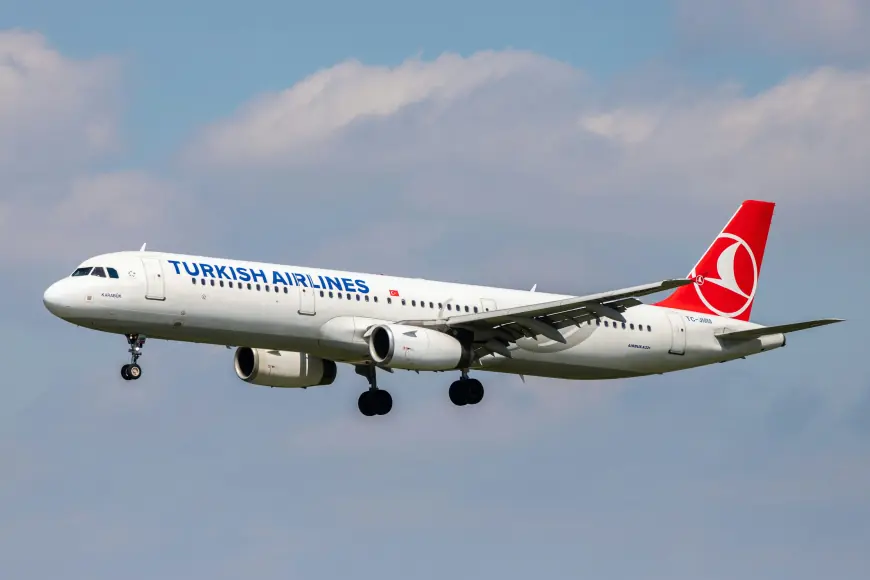Where Does Turkish Airlines Fly? +1–855–742–0149

Where Does Turkish Airlines Fly? the national flag carrier of Turkey, has earned a prestigious reputation for its vast global network, high-quality service, and strong presence across continents. Founded in 1933 with just a few aircraft, the airline has evolved into one of the largest and most influential players in international aviation. Today, it operates flights to more countries than any other airline in the world, making it a top choice for travelers looking to connect through Istanbul to destinations across Europe, Asia, Africa, the Americas, and beyond.
A Truly Global Network
The question “Where does Turkish Airlines fly?” has a remarkably expansive answer. As of recent years, Turkish Airlines flies to over 300 destinations in more than 120 countries. Its strategic hub at Istanbul Airport plays a pivotal role in this widespread connectivity. Positioned at the crossroads of Europe and Asia, Istanbul serves as a natural transit point for international travelers. This geographical advantage allows Turkish Airlines to operate a highly efficient hub-and-spoke model, linking cities across continents with relatively short layovers.
Europe: A Stronghold of Operations
Europe is one of Turkish Airlines' primary markets, and the airline flies to nearly every major city on the continent. From bustling capitals like London, Paris, Berlin, and Rome to smaller cities like Ljubljana, Bologna, and Vilnius, the carrier provides extensive coverage. Turkish Airlines doesn’t just stop at the big cities; it also serves secondary and tertiary destinations, allowing travelers access to a wide range of European locales.
In fact, Turkish Airlines has more destinations in Europe than many European carriers, making it a major competitor in the intra-European travel market. With frequent flights, often multiple per day, Turkish Airlines ensures that both business and leisure travelers can enjoy convenient and flexible scheduling.
Asia: Connecting the East
Asia represents another major area of focus. Turkish Airlines has built a robust presence in East Asia, South Asia, Central Asia, and Southeast Asia. Key destinations include Beijing, Shanghai, Tokyo, Seoul, Bangkok, Kuala Lumpur, Jakarta, Singapore, New Delhi, and Mumbai. The airline also flies to lesser-served destinations such as Kathmandu, Ulaanbaatar, and Ashgabat.
In the Middle East, Turkish Airlines has a dense network serving cities like Dubai, Abu Dhabi, Doha, Riyadh, Jeddah, Muscat, Kuwait City, and Tehran. This network facilitates easy travel across the region, with connections that cater to both tourism and labor markets.
Central Asian countries, including Kazakhstan, Uzbekistan, Kyrgyzstan, and Azerbaijan, are also well-covered, reflecting Turkey’s cultural and historical ties to the Turkic-speaking world.
Africa: A Major Player on the Continent
Perhaps one of Turkish Airlines’ most strategic expansions has been into Africa. While many major global carriers serve only a handful of African cities, Turkish Airlines flies to over 60 destinations across the continent. This includes not just capital cities like Nairobi, Lagos, Accra, Cairo, and Johannesburg, but also smaller and less frequently served cities such as Banjul, Bamako, Kigali, Ouagadougou, and Conakry.
This extensive African network positions Turkish Airlines as a key player in connecting Africa to the world. Business travelers, humanitarian workers, students, and tourists often rely on Turkish Airlines due to its convenient schedules and reliable service.
The Americas: North and South
Turkish Airlines has also significantly expanded its presence in the Americas over the past decade. In North America, it operates flights to major U.S. and Canadian cities including New York, Chicago, Los Angeles, Washington D.C., Miami, Boston, Dallas, Seattle, Toronto, Vancouver, and Montreal. These routes are especially popular among international travelers heading to Europe, Africa, or the Middle East via Istanbul.
In Latin America, the airline flies to key cities such as São Paulo, Buenos Aires, Bogotá, Panama City, Mexico City, and Havana. These routes are a testament to Turkish Airlines’ commitment to connecting the globe, even to markets that many traditional European or Asian carriers have not prioritized.
Oceania: Expanding Horizons
Although relatively new to Oceania, Turkish Airlines has begun to extend its reach to destinations in Australia. Melbourne is one of the confirmed destinations, with plans to expand to Sydney and possibly Brisbane in the future. These long-haul flights serve to strengthen the airline’s image as a truly global connector, capable of linking Australia to Europe, Asia, and Africa with one-stop service via Istanbul.
Domestic Flights in Turkey
While Turkish Airlines is best known for its international operations, it also maintains a strong domestic network. Turkey is a country with significant regional diversity and a large landmass, making air travel a convenient option. Turkish Airlines flies to nearly every major city and many regional airports within Turkey, including Ankara, Izmir, Antalya, Trabzon, Gaziantep, Diyarbakir, and Van. This extensive domestic coverage allows travelers to easily connect from international flights to even the most remote parts of the country.
Codeshare Agreements and Star Alliance Membership
In addition to its own routes, Turkish Airlines extends its reach through codeshare agreements and its membership in the Star Alliance, one of the world’s largest airline alliances. Through Star Alliance partners such as Lufthansa, United Airlines, Singapore Airlines, and Air Canada, Turkish Airlines can offer access to thousands of additional destinations around the globe. This partnership enhances connectivity and allows passengers to enjoy seamless travel experiences across different carriers.
Frequency and Fleet
The reach of Turkish Airlines is supported by its large and modern fleet of aircraft, including Boeing 777s, Airbus A350s, Boeing 787 Dreamliners, and narrow-body Airbus A320 and Boeing 737 families. This fleet allows the airline to adjust capacity to meet demand across different route types, from long-haul intercontinental flights to short domestic hops.
The airline is also known for operating frequent flights on many of its routes. For example, there may be multiple daily departures to major cities like London, Frankfurt, or Dubai, giving passengers flexibility in choosing their preferred travel times.
Conclusion
So, where does Turkish Airlines fly? The simple answer is: nearly everywhere. From the heart of Istanbul, Turkish Airlines has woven a vast web of connections that spans continents, cultures, and climates. Whether you're headed to a global capital, a remote village in Africa, or a bustling Asian metropolis, there’s a good chance Turkish Airlines can get you there — comfortably and efficiently. Its commitment to expansion, its strategic location, and its dedication to customer service have made it a leading choice for international travelers. As the airline continues to grow and explore new routes, its global footprint will likely expand even further, solidifying its role as one of the world's most far-reaching and ambitious airlines.
What's Your Reaction?
 Like
0
Like
0
 Dislike
0
Dislike
0
 Love
0
Love
0
 Funny
0
Funny
0
 Angry
0
Angry
0
 Sad
0
Sad
0
 Wow
0
Wow
0



















































